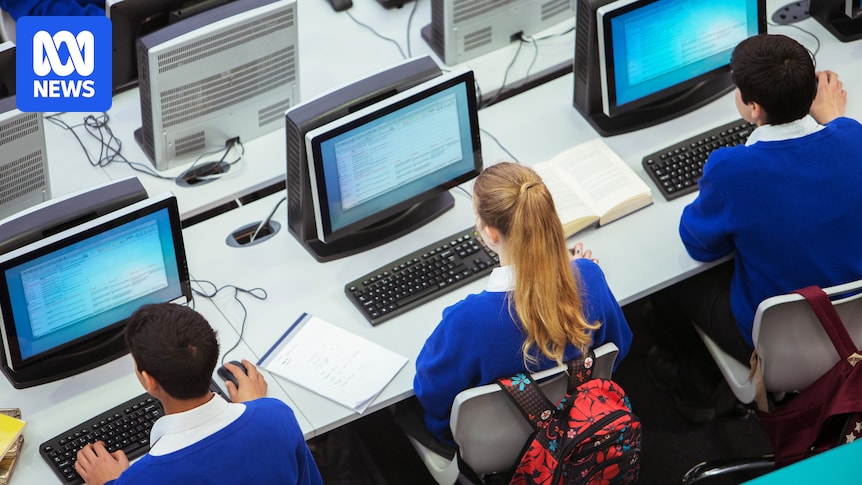
There’s no doubt that Australian teachers are seeking more efficient ways to manage their workload. Tasks such as reviewing a single student assessment can consume up to 30 to 40 minutes of a teacher’s time. However, what if a tool could accomplish the same task in mere seconds?
Generative artificial intelligence (AI) tools, like ChatGPT, offer opportunities for increased efficiency across various sectors, including education. While the ability of AI to produce realistic, human-like content has raised concerns about its impact on students’ learning, Australia has developed a framework to guide the responsible and ethical use of AI in ways that benefit students, schools, and society.
Tech giants like Microsoft, OpenAI, and Anthropic are accelerating efforts to integrate generative AI into education systems. They recently announced a $US23 million ($35 million) AI teaching hub in New York aimed at helping educators learn to effectively incorporate AI tools in classrooms. This development raises the question: Could there be a future where generative AI is embraced in schools more than it is feared?
The Rise of AI in Education
After the launch of ChatGPT by OpenAI in November 2022, Australian education departments swiftly banned its use by students. Concerns arose over the tool’s sophistication, making it challenging to detect AI-assisted plagiarism.
David Braue, a technology journalist at Cybercrime Magazine, remarked,
“Students have certainly taken to the technology very quickly. The concern, of course, is that this genie is not going back in the bottle.”
Teachers need to be aware of their obligations regarding data and content fairness, Braue emphasizes.
The Australian Framework for Generative AI in Schools, released by the federal government in late 2023, addresses the challenges and opportunities these tools present to teachers and students. The framework is set for annual reviews to adapt to evolving needs.
Opportunities and Challenges
RMIT computing professor Michael Cowling suggests that alongside concerns about academic integrity, there are significant opportunities for AI in education.
“When we first started talking about generative AI, we were very focused on academic integrity … that’s one component,” he says. “But another is teaching the teachers what they can use this tool for effectively.”
By understanding AI’s potential, teachers can better educate students on its uses.
South Australia’s Innovative Approach
While many Australian schools had banned generative AI by 2023, South Australia took a different approach by trialing a generative AI chatbot developed with Microsoft, called EdChat. This tool, customized for school environments, allows students and teachers to ask questions and learn more about various topics without compromising user data.
Adelaide Botanic High School, which uses EdChat, is an example of embracing this technology. Principal Sarah Chambers appreciates the proactive approach, stating,
“I think the thing I appreciate about the approach is to not shy away from this challenge, to really look to the reality that this is a technology that will influence how we work, from now and into the future, because it’s not going anywhere.”
EdChat includes safety features like content filters to block inappropriate requests, addressing concerns about data security and content filtering.
Balancing AI Integration
Despite the potential benefits, there are challenges in integrating AI into education. Teachers must design assessments that genuinely capture student growth, a skill that AI tools cannot replace. Chambers notes,
“Generative AI has just simply provided a more sophisticated tool for students to be able to [plagiarize].”
Professor Cowling believes reliance on AI is acceptable if teachers understand its use. However, Braue warns that understanding AI is not enough to safeguard against risks, such as data protection and content fairness, which remain critical issues.
National Strategy for AI in Schools
Following South Australia’s AI trial, other states like Queensland, Western Australia, and New South Wales have announced similar initiatives. However, the Productivity Commission (PC) argues for a national approach to AI integration in schools, recommending it in an interim report.
“A national approach would aid innovation, support equal access to high-quality tools, and spread the benefits to all,”
the report states.
Chambers advocates for adapting to generative AI quickly, emphasizing a ‘learning with’ model. Feedback from schools like Adelaide Botanic is crucial for future tool development. She stresses the importance of students learning to navigate AI tools, highlighting the need for critical thinking and creativity skills in evaluating information quality.
As Australian schools cautiously explore AI tools, the balance between embracing innovation and safeguarding educational integrity remains a key challenge. The future of AI in education will depend on how well these tools are integrated into teaching practices and how effectively educators can harness their potential for enhancing learning outcomes.







